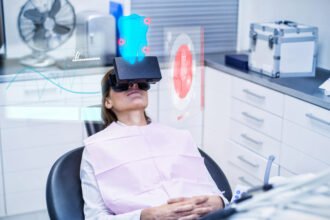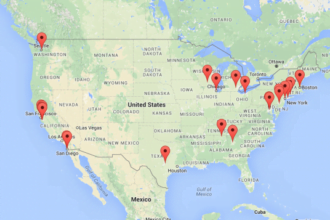
Image credit: All Things D
First published on MedCityNews.com. With the hardware revolution well underway in health sensing, it’s time for a revolution on the software side of the equation, industry leaders say.

Image credit: All Things D
First published on MedCityNews.com. With the hardware revolution well underway in health sensing, it’s time for a revolution on the software side of the equation, industry leaders say.
Engineers have done some pretty amazing things on the device side — from building sensors into apparel, to eliminating the need for a chest band or electrodes to monitor heart rate, to even eliminating the need to touch a person all together to collect some of his biometrics. Now the industry needs better tools to make use of all that great data.
Tim O’Malley is president of a company called EarlySense, which falls into that last pot. It markets a patient monitoring system based on a sensing plate about the size of a pad of paper that’s slipped under the mattress of a hospital bed. Without touching the patient, it tracks heart rate, respiration and motion, then sends that data to a bedside unit and to a central display unit that’s set up at a nurses station.
When he looks ahead, O’Malley sees advances in algorithms and artificial intelligence that can do more predictive analysis on the data collected by these sensors.
With the goal of preventing falls and adverse events by detecting the earliest warning signs of a change in the patient’s vitals or position, EarlySense already does some of this. For example, it uses a pressure sensor algorithm to remind a clinician if a patient should be turned. And, to cut down on alarm fatigue, it alerts nurses about changes in a patient’s heart rate only when those changes have exceeded a certain threshold.
“As our database increases, I think we’ll be able to more of that,” O’Malley said. “I think that becomes a really critical tool in the future, to give providers a heads-up earlier.”
Entrepreneur Liz Dickinson, whose work is focused on the consumer side of the market, agrees that the next step in pushing adoption of heart rate monitoring technology lies in the software. “We’re going to see applications that can make sense of data and present it back to the user in a way that allows them to change their behavior in a really prescriptive way, as opposed to an observant way,” she said.
Dickinson founded a company called MIO, which makes a wrist-worn heart rate monitor similar to Basis. Its sweet spot is athletes at the middle of what she calls the fitness continuum.
“The device of choice for the bottom of the spectrum is a pedometer; it’s the only thing that makes sense to that group of consumers,” she explained. Meanwhile, more advanced athletes are also interested in sleep and speed.
“We are unleashing a metric that’s not traditionally been accessible to the general public,” she explained. “Heart rate tracking has not been accessible to the general population because it was a very cumbersome process that required use of a chest strap.”
But the need for more innovative software doesn’t necessarily mean the hardware revolution has come full circle just yet. Dickinson sees miniaturization as the next step on that front. “Then you’re going to see a proliferation of smart watches that are able to run different kinds of apps that connect to cellular networks, so you won’t need to carry your phone when you’re exercising to use your apps,” she predicted.
Oh, and one more thing. “When Apple’s (smartwatch) comes out, it will be a beautiful piece of engineering,” she added.









